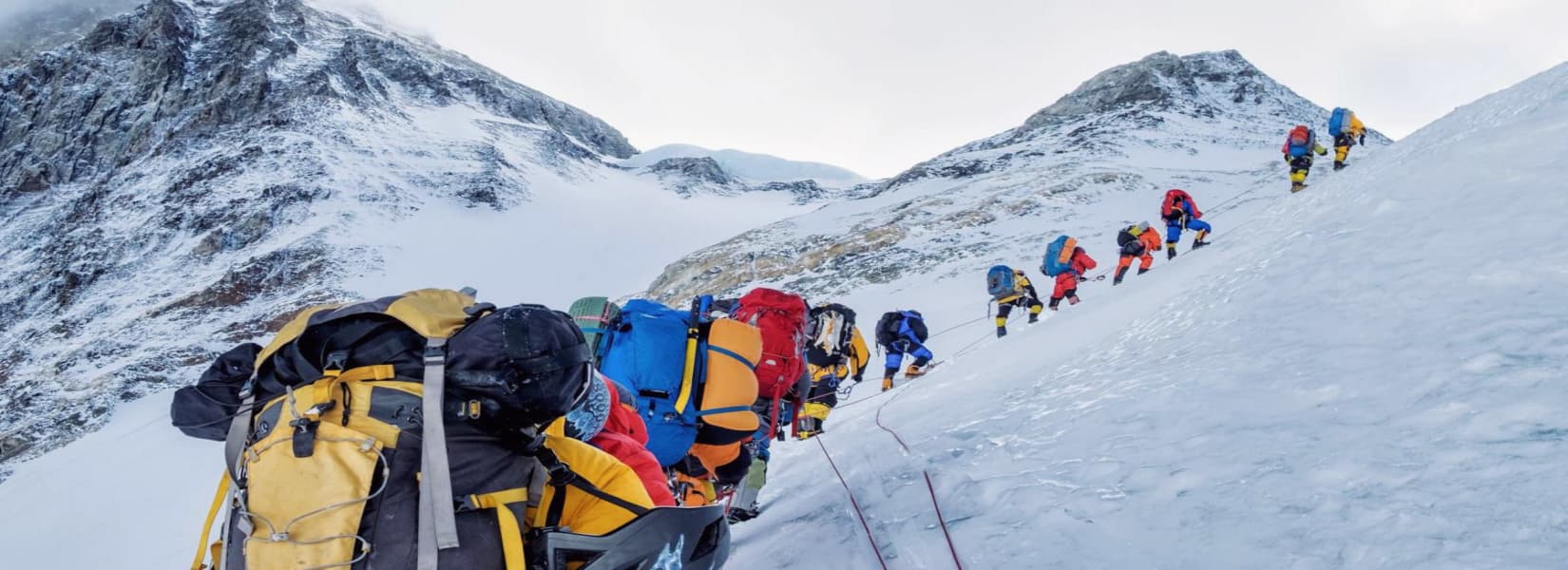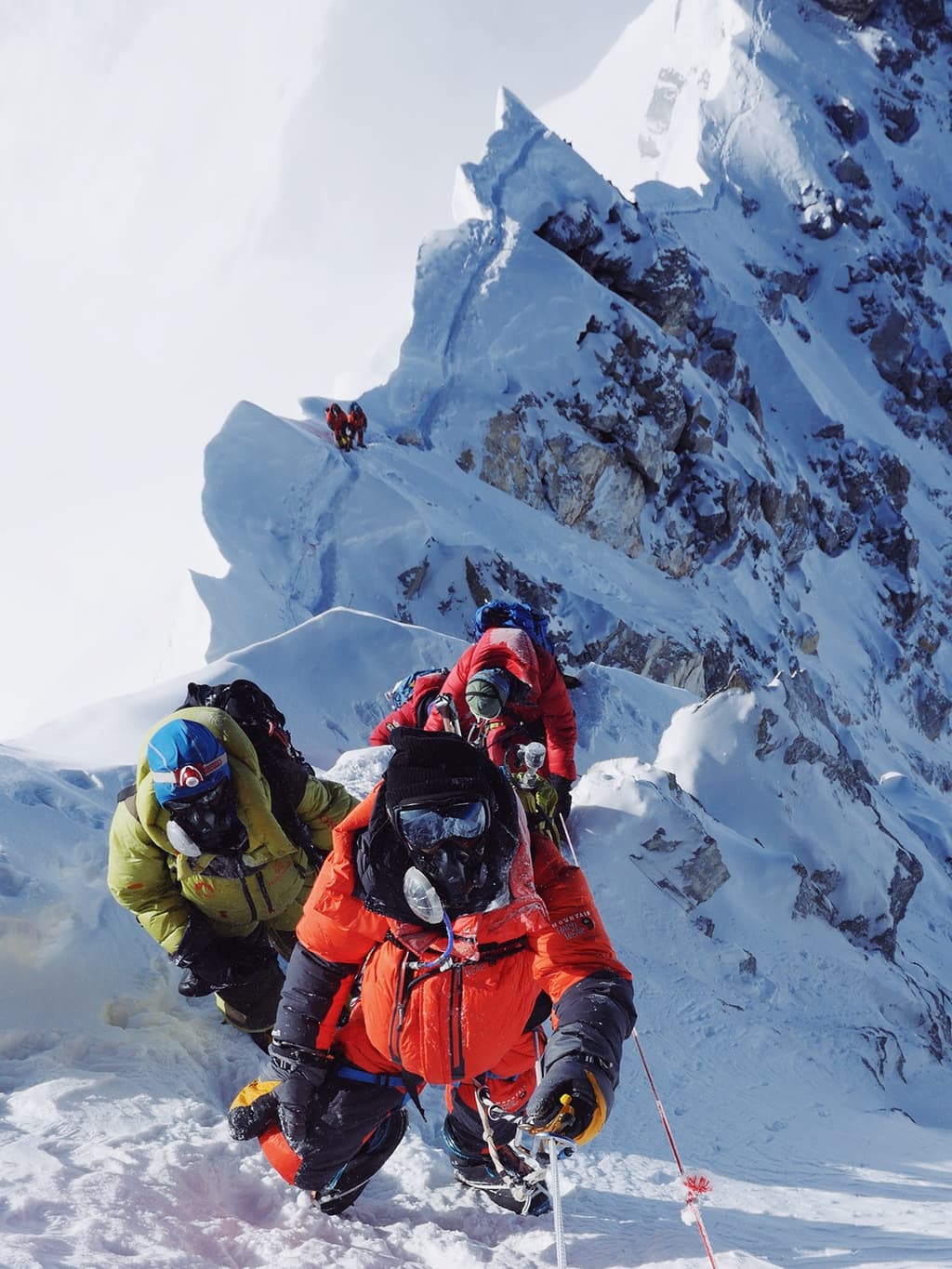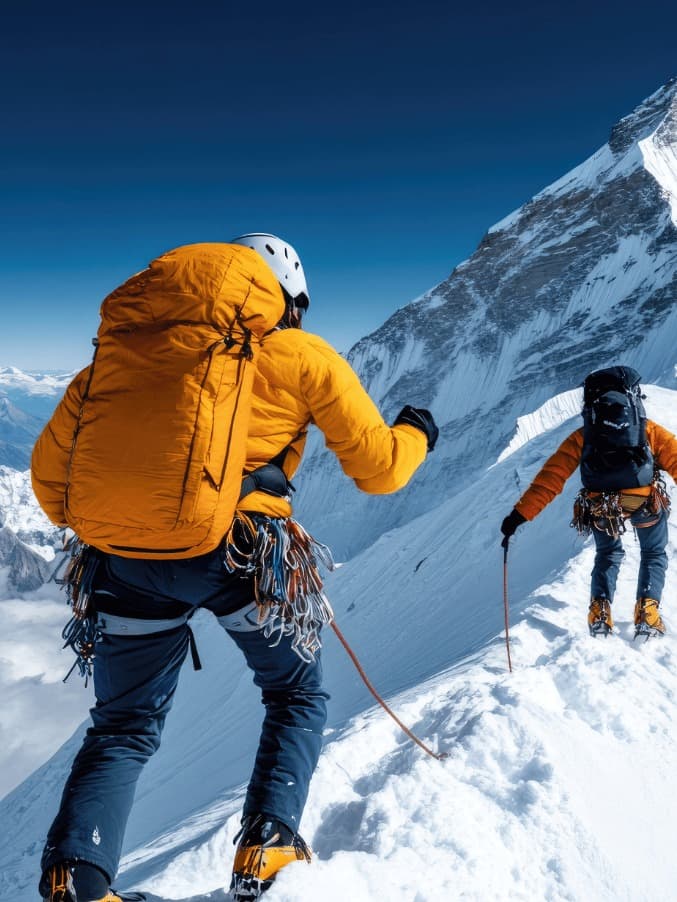Every great Himalayan adventure begins not on the mountain, but at the permit office. Nepal’s breathtaking peaks—ranging from the iconic Mount Everest to lesser-known gems like Ama Dablam, Mera Peak, and Lhotse—are among the most regulated climbing destinations in the world. And rightly so. The permit system safeguards both the climbers and the delicate mountain environment, ensuring responsible exploration and sustainable tourism across the Himalayas.
Whether you’re planning a high-altitude expedition above 8,000 meters or a trekking peak ascent below 7,000 meters, understanding the permit requirements is the first step toward a successful and compliant climb.
Why Permits Needed for Climbing in Nepal
There are a number of reasons why permits are necessary when climbing in Nepal. One is that permits will regulate and manage the increased trekkers and climbers, to help protect the environment from overexploitation and degradation. With a permit, the Nepalese government can effectively monitor and manage the impact of tourism on fragile ecosystems; specifically in high altitude zones. Secondly, permits provide a means for safety; in case something goes wrong, authorities are able to track their climbers, and confirm proper protocols have unfolded. Additionally, permits are a revenue stream for local and community organizations, as part of a sports adventure, it also is a means of socio-economic and conservation development. Obtaining a permit is not a pointless requirement, it simply illustrates our connectedness with environmental protection, community benefit and home-climber safety.
-
Environmental Protection: Permitting systems help protect delicate mountain environments from overuse and degradation. They enforce regulations that encourage responsible climbing practices. Permits often come with requirements to minimize impacts, including managing waste and conserving natural resources.
-
Economic Factors: Permit fees contribute to local economies and funding for conservation efforts, infrastructure, and the development of trekking routes. The revenue helps support the livelihoods of local communities that depend on tourism and mountaineering.
-
Cultural Respect: Permits reflect respect for local laws and regulations, acknowledging the rights and authority of local communities over their lands.
-
Organized Expeditions: Permits often require climbers to utilize licensed guides and support teams, which helps ensure that expeditions are well-organized and managed.
Climbing permits serve multiple purposes. They ensure the safety and regulation of climbers, contribute to environmental conservation, and provide revenue to support local communities and infrastructure. Additionally, permits help maintain order on the mountains, preventing overcrowding and ensuring sustainable tourism practices in Nepal's mountainous regions.
Types of Permits in Nepal
Nepal issues different types of permits depending on the peak you wish to climb and the region it is located in.Nepal's mountains are classified into trekking peaks and expedition peaks, each requiring different permits.
Climbing permits for Nepal
Climbing permits are mandatory for all peaks in Nepal and are issued by the Nepal Mountaineering Association (NMA) or the Department of Tourism. The permits differ based on the peak’s altitude and category:
Expedition Permits for Peaks Above 6,500 Meters: For major peaks like Mount Everest, Lhotse, and Makalu, climbers must obtain an expedition permit from the Department of Tourism (DoT). These permits are mandatory and vary in cost depending on the mountain, season, and nationality of the climber. Cost Varies significantly (e.g., Everest permit costs about $11,000 for a group of 7 or more climbers). It includes additional costs and requirements for safety measures.
Trekking Peak Permits: Managed by the Nepal Mountaineering Association (NMA), trekking peak permits are required for peaks classified as ‘trekking peaks’ such as Island Peak (Imja Tse) and Mera Peak. These permits are generally more affordable and easier to obtain than expedition permits. Cost ranges from $200 to $1,000, depending on the peak. Typically valid for a fixed period (usually up to 30 days), with extensions possible.Examples of Popular Trekking Peaks:Island Peak (Imja Tse): $200 (during peak season),Mera Peak: $250 and Lobuche East: $200.
National Park Permits:
Issued by Department of National Parks and Wildlife Conservation.Required for trekking or climbing within national parks like Sagarmatha National Park (Everest) or Annapurna Conservation Area.The cost Varies depending on the park.
- Annapurna Conservation Area Permit (ACAP): Needed for trekking in the Annapurna region, including Annapurna Base Camp. It Costs around $30 per person. Fee may vary depending on the length of your stay.
- Sagarmatha National Park Entry Permit: Mandatory for the Everest region, including the trek to Everest Base Camp.It cost approximately $30 per person (for a 60-day period, but fees can vary).
- Langtang National Park Permit: Required for trekking in the Langtang region.
TIMS Card (Trekkers’ Information Management System)
The TIMS card ensures trekkers’ safety and helps authorities monitor trekking activities. There are two types:
- Green TIMS Card: For independent trekkers.
- Blue TIMS Card: For trekkers traveling with organized groups through registered agencies.
Restricted Area Permits
Restricted area permits are required for trekking in sensitive regions near international borders or areas with cultural and environmental significance. These permits are issued only through registered trekking agencies, and trekking must be done with a licensed guide. cost varies depending on the region. Examples include:
- Upper Mustang: USD 500 per person for the first 10 days, then USD 50 per day.
- Manaslu Region: USD 100 per person per week during peak season, then USD 15 per day.
- Upper Dolpo: USD 500 per person for the first 10 days, then USD 50 per day.
Special Permits for Border Peaks
Some peaks near the Nepal-Tibet border require special permissions in addition to climbing permits. These include peaks like Cho Oyu and Shishapangma, which may involve coordination with Chinese authorities.
Important Considerations:
- Permit Application: Apply for permits well in advance, as processing times can vary.
- Trekking Agency: Hiring a registered trekking agency can simplify the permit application process.
- Compliance: Adhere to all permit conditions and regulations to ensure a safe and responsible climbing experience.
By understanding and complying with these permits and regulations, climbers can contribute to the sustainable development of Nepal's tourism industry while enjoying a safe and rewarding adventure in the Himalayas.
Climbing Permits fees in Nepal
The climbing permit fees in Nepal depend on the mountain's height, location, season and climber's nationality. Below is a breakdown of permit fees for expedition peaks (above 7,000 meters) and trekking peaks (under 7,000 meters):
For Foreign Climber in Dollars per person
| Mountain | Spring | Autumn | Winter/Summer |
| Mt.Everest(normal route) | $11,000 | $5,500 | $2,750 |
| Mt.Everest(other Route) | $11,000 | $5,000 | $2,500 |
| Other mountains above 8000m | $1800 | $900 | $450 |
|
7501 meters to 7999 meters, |
$600 | $300 | $150 |
|
7000m to 7500m |
$500 | $250 | $125 |
|
6501m - 6999m Peaks |
$400 | $200 | $100 |
| Mt.Amadablam(6812m) | $400 | $400 | $200 |
| Below 6500m | $250 | $125 | $70 |
For Nepalese Climber( in Nepalese Rupees NPR) Per Person
| Mountain | Spring | Autumn | Winter/Summer |
| Mt.Everest(normal route) | 75,000 | 37,500 | 18,250 |
| Mt.Everest(other Route) | 60,000 | 30,000 | 15,000 |
| Other mountains above 8000m | 10,000 | 5,000 | 2,500 |
|
7501 meters to 7999 meters, |
8,000 | 4,000 | 2,000 |
|
7000m to 7500m, |
600 | 300 | 1,500 |
|
6501m - 6999m Peaks |
5,000 | 2,500 | 1,250 |
| Mt.Amadablam(6812m) | 8,000 | 8,000 | 8,000 |
| Below 6500m | 4,000 | 2,000 | 1,000 |
Additional Costs:
-
Garbage Deposit: Typically, a refundable garbage deposit is required (around $500 to $1,000) to ensure that climbers remove their waste from the mountain.
-
Trekking Permits: Separate trekking permits like TIMS (Trekkers' Information Management System) and national park permits may also be required.
- Expedition Liaison Officer Fees: For high-altitude expeditions, the government may require the hiring of a Liaison Officer to ensure compliance with regulations and assist climbers. This fee is usually included in the overall expedition cost.
Climbing fees vary significantly based on the peak and season. The most expensive is Mount Everest, while trekking peaks offer affordable options for beginner climbers. Additional costs for permits, guides, and logistical support must also be considered.
Permit Application Process for Climbing in Nepal
Obtaining permits for climbing or trekking in Nepal is an essential step to ensure a legal and hassle free adventure. Here’s a step-by-step guide to the permit application process:
- Choose Your Peak and Route: Research the peak or trekking route you plan to undertake.Understand the type of permits required for your chosen destination, including climbing, trekking, or restricted area permits.Determine whether your climb falls under expedition peaks (above 6,500 meters) or trekking peaks (below 6,500 meters).
-
Engage a Registered Trekking or Expedition Agency: Most permits, especially for climbing peaks and restricted areas, must be applied for through a government-registered trekking or expedition agency.Agencies like Everest Sherpa Expedition handle the permit application process on your behalf.Ensure the agency is licensed and experienced in handling your specific climbing or trekking requirements.
-
Submit the Application: Your trekking or expedition agency will submit your documents to the relevant authorities, such as the Nepal Mountaineering Association (NMA) or the Department of Tourism.For restricted area permits, applications must go through the Department of Immigration with support from your agency.
-
Pay the Permit Fees: Permit fees vary based on the peak, region, season, and nationality.Payments are typically made in USD or NPR, either directly or through your agency.Ensure you receive a receipt for your payment as proof.
-
Approval and Issuance: Once the application is processed and approved, the permit will be issued.
-
Processing times can vary: Climbing Permits is typically issued within a few days.Restricted Area Permits may take longer due to additional approvals.
-
Carry Your Permits: Always carry the original permits with you during your expedition.Be prepared to show permits at checkpoints, national park entrances, and other official locations.
Required Documents: Prepare the necessary documents for the permit application. Common requirements include:
- Passport Copies: A clear copy of your passport (photo and personal information page).
- Passport-Sized Photographs: Typically 2-4 recent photos.
- Travel Insurance Details: Proof of insurance that includes high-altitude evacuation coverage.
- Climbing Details: Information about the peak, route, and expedition timeline.
- Personal Information Form: Completed application form provided by the agency.
- Team Details: If climbing in a group, provide a list of team members and roles (e.g., climbers, guides, porters).
The permit application process in Nepal is straightforward when handled properly. Partnering with a reputable agency and preparing all required documents ensures a smooth experience, allowing you to focus on your adventure in the majestic Himalayas.
Tips for a Smooth Application Process
By following these tips, you can ensure a hassle-free permit application process and focus on preparing for your climb!
- Choose a Registered Trekking/Climbing Agency: Work with a government-registered trekking or climbing agency to handle the permit application and logistics.They are familiar with the process and can save you time and effort.
- Apply Early: For expedition peaks, apply at least 2-3 months in advance.For trekking peaks, apply 1-2 weeks before your climb.Early applications allow time to address unexpected issues.
- Ensure All Documents Are Complete: Prepare required documents in advance like Passport copies, recent passport-sized photos,detailed expedition itinerary,Insurance documents (for climbers, guides, and porters) and Recommendation letter (if needed).
- Choose the Right Season: Permit fees are lower in autumn, winter, and summer compared to spring.Applying during the off-season reduces processing delays due to fewer applications.
- Verify Permit Fees: Check the latest permit fees for your chosen peak and season. Ensure you pay the correct amount to avoid delays in approval.
- Plan for National Park/Conservation Area Permits: Identify if your climb is in a protected area (e.g., Sagarmatha, Annapurna, or Langtang).Obtain the necessary entry permits separately.
- Arrange for a Liaison Officer (LO): Expeditions to peaks above 7,000m require a government-appointed Liaison Officer.Confirm this arrangement with your climbing agency.
- Prepare for the Garbage Deposit: Expedition teams must pay a refundable garbage deposit to ensure waste management compliance.Ensure you follow waste management protocols to claim your refund.
- Double-Check Application Forms: Ensure all forms are correctly filled out and signed.Errors or omissions can delay the process.
- Maintain Open Communication: Stay in touch with your trekking/climbing agency and the relevant authorities for updates.Promptly address any issues or additional requirements.
Every ascent begins with preparation — and in Nepal, that preparation starts with your climbing permits. They are not mere formalities; they are your passport to the heart of the Himalayas, a commitment to safety, ethics, and respect for the mountains that inspire us all.
With Everest Sherpa Expeditions, you never have to worry about the complexities of the process. From permit acquisition to full expedition logistics, we provide end-to-end solutions backed by trust, precision, and decades of Himalayan expertise.
So, when you’re ready to step into the high alpine world of ice and ambition, let us handle the groundwork — and you, the glory.
FAQs About Permits and Fees For Climbing in Nepal
Q. Why do I need a peak climbing permit in Nepal?
A: Peak climbing permit is required to ensure proper management of climbing activities, promote responsible tourism, and support environmental conservation in the sensitive mountain regions of Nepal.
Q. What types of peaks require climbing permits?
A: Peaks in Nepal are categorized as "Trekking Peaks" and "Expedition Peaks." Both categories require permits, but the regulations and fees differ based on the peak's elevation and technical difficulty.
Q. How are the peak climbing permit fees determined?
A: Permit fees vary based on the peak's height, with higher peaks generally having higher fees. The fees also differ for peaks in different mountain ranges.
Q. Can I climb any peak without a permit?
A: No, climbing peaks in Nepal requires a permit. It's essential to obtain the necessary permits before embarking on any climbing expedition.
Q. How do I apply for a climbing permit?
A: You can apply for climbing permits through registered trekking agencies or directly with the Nepal Mountaineering Association (NMA) for NMA-regulated peaks.
Q. Are there any restrictions on climbing seasons?
A: Some peaks have climbing seasons due to weather and safety considerations. The best time for climbing is typically during pre-monsoon (spring) and post-monsoon (autumn) seasons.
Q. Are there additional fees besides the climbing permit?
A: Yes, there might be other fees such as TIMS card fees, conservation area fees, and garbage deposit fees. These fees contribute to conservation efforts and sustainable
tourism practices.
Q. Can I climb without a guide or Sherpa?
A: Some peaks might require climbers to have a guide or a designated Sherpa. Check the specific requirements for your chosen peak.
Q. Are there any penalties for not following waste management guidelines?
A: Yes, climbers who do not adhere to waste management rules can face penalties, including forfeiture of their garbage deposit.
Q. Can I get climbing permits upon arrival in Nepal?
A: It's advisable to obtain climbing permits in advance through registered agencies to ensure a smooth and well-organized climbing experience.
Q. Can I apply for multiple permits for different peaks at once?
A: Yes, you can apply for permits for multiple peaks simultaneously, depending on your climbing plans and the peaks' availability.
Q: Can I transfer my permit to another climber?
A: No, climbing permits are non-transferable and issued to specific individuals.
Q: Are permits cheaper in the off-season?
A: Yes, permit fees for most peaks are lower in autumn, winter, and summer compared to spring.
If you need any further information, please contact us by email: [email protected], Phone: +977- 980 195 6248 (WhatsApp).


